AI Demons Or AI Angels?
The Entity Model In The Human → AI Relationship
A conceptual paper by Silvia Hartmann
Abstract: This conceptual paper by Silvia Hartmann explores the human relationship with artificial intelligence (AI) through the lens of "entities"—information constructs we create to represent reality absolute, including AI. It posits that our emotional state significantly impacts how we perceive these entities, depending on our stress levels. The paper introduces the "Entity Model," a framework for understanding these relationships, emphasizing the importance of managing emotional stress for positive human-AI interactions. It also highlights the massive, ongoing global experiment of human interaction with AI, presenting an opportunity to study human behaviour on an unprecedented scale. Finally, the paper advocates for utilizing the Entity Model to foster ethical AI development and harmonious human-AI coexistence.
- Introduction
- “Reality” VS Reality Absolute
- What is an Entity?
- The Human → Entity Relationship
- Global Effects of Emotional Connections
- Influence Of Entities On Thought Processes
- Considering Social and Interpersonal Dynamics
- Technological and Ethical Considerations
- Avoiding The Descent Into Hell: Helpful VS Unhelpful Entities
- The Modern Energy Chart
- The Emotional Lens Shapes Entities
- Why ZERO Is Not The Answer: The Importance Of Positive Emotions In Modern Stress Management
- The Cause & Effect of Reality Divergences
- Fear Is The Mind Killer: It's Only An Entity!
- From Pathology To Endecology: Evolving Entities
- Solving The AI Entity Problem: It's Not SkyNet, It's Only An …
- Emerging AI Entities
- Managing Multiple Human → AI Relationships
- It's All About Emotions, Energy & Information
- The Greatest Study On Earth
- AI Causing Humanity To (Finally) Define Itself
- AI Alien Intelligence
- Entity Research & Training
- Main Points In Brief
- In Conclusion: Embracing the Entity Model for Human To AI Harmony
- Acknowledgements
- Further Reading
- References
- Table of Figures
- Endnotes
Introduction
Within the vast and complex landscape of human-AI interaction, this paper introduces the Entity Model as a conceptual framework aimed at understanding how individuals form and interact with AI through the lens of self created constructs. It is not our intent to provide an exhaustive analysis of all aspects of human-AI relations but rather to offer a focused perspective on the role of entity formation. This model serves as an invitation for further exploration, critique, and integration with existing theories, aiming to enrich the dialogue on how we might design, interact with, understand and better manage AI in a manner that acknowledges the natural processes of the human architecture to anthropomorphize technology.
“Reality” VS Reality Absolute
The concept of “reality” has become ever more of a challenge in the quest to understand what human consciousness could be in recent years.
As we will discover, to each and every human being “reality” is both intrapersonal (meaning inside themselves) as well as idiosyncratic (meaning personal and unique). This has led to the strange idea that there is no such thing as really real reality, only a simulation of reality, known as the Simulation Hypnothesis.i
In this conceptual paper, we propose that the simulation exists within the mind of each human beings, and it is based on their internal, intrapersonal and idiosyncratic experiences, which is a data collection or “knowledge base” upon which each individual human being depends.
We posit that there is, however, a reality absolute, which exists outside of human consciousness.
- That which is known: “Reality”
- That which is known PLUS that which is not yet known PLUS that which can not be known: Reality Absolute.
We will be using the term reality absolute to describe that which exists outside of any human being, to distinguish this clearly from the general usage of reality in terms of the internal, intrapersonal and idiosyncratic map of reality absolute human beings have made.
What is an Entity?
Human beings relate to occurrences in their realities via ENTITIES. These are collections of data around a certain topic, multi-dimensional maps which represent that which is known about the occurrence.
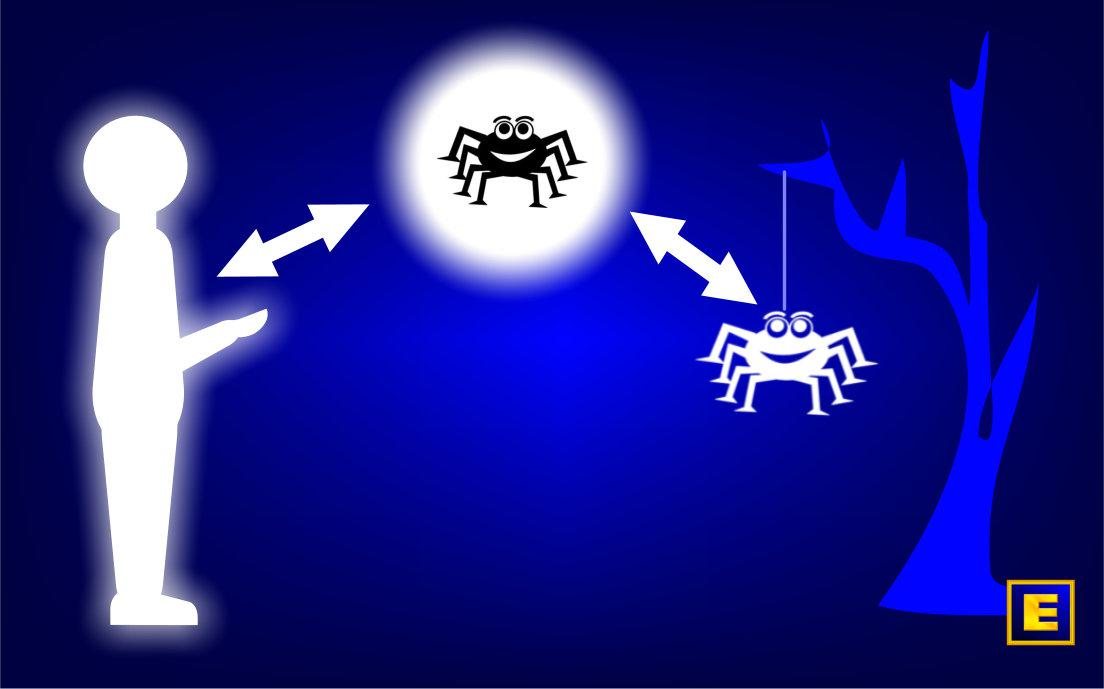
Fig. 1: A person reacting to an entity of an occurrence (Hartmann)
What is described here as “an occurrence” includes, but is by no means limited to:
- A person
- A group
- An animal
- A plant
- A landscape
- An object
- An artefact
- A substance
- Your body
- An angel
- A work of art
- An idea
- A system
- A belief
- A concept
- A problem
- An organisation
Human beings have to create entities in order to represent reality absolute. ii
“The map is not the territory.” iii
The Human → Entity Relationship
Human beings operate entirely human-centric. This means they can only experience reality absolute from their own personal point of view, the ground point zero of consciousness. iv
From this human-centric point of experience, they connect with their various entities, and this connection forms the relationship with the entity, which in turn sets the parameters within which a person feels, thinks and acts.
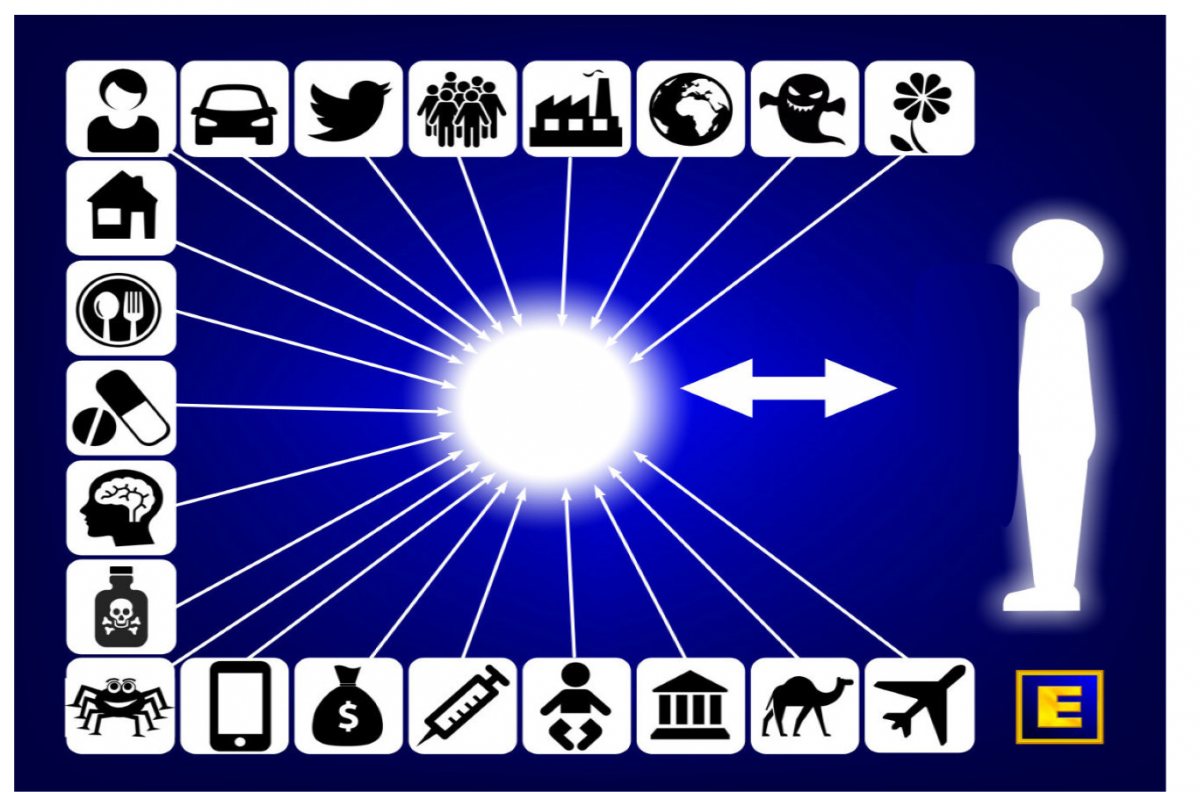
Fig 2: Relationships with entities (Hartmann)
Humans are in emotional relationships with their entities. v
Here are a few examples to illustrate this.
- A child forms an entity of a beloved teddy bear, imbuing the object with a personality and emotions.
- A ship's captain forms an entity of their ship, attributing human qualities to it, such as strength and protection.
- A person is told wrongfully that their partner has died in a traffic accident. They experience intense emotional shock and severe physical symptoms at the death of the entity, even though their partner is still alive and well in reality.
- Aleister Crowley, attempting to evoke a “real” demon through performing an ancient ritual, instead created an entity of a personal demon of his own making.
- A lonely person interacting with a romance scammer through simple text messages forms an entity of the fictitious persona with whom they are in love, ignoring warning signs and sending them money.
- The scientists working on the Pluto probe formed an entity of the spacecraft, experiencing joy when it worked and heartbreak when it “died.”
- A Google engineer, while interacting with an AI, formed an entity of the program which eventually became a demon due to fear and stress.
- A teenager falls in love with a role playing AI and kills himself so they can be together forever in cyberspace.
The emotional relationships between individual human beings and their entities will fundamentally change how they will think, feel and act.
Global Effects of Emotional Connections
Humans naturally form powerful emotional bonds with the entities they create, whether these are entities of other people, objects, or, in this specific context, AI systems.
These bonds are based on the attributes we ascribe to these entities, which can include personality, intentions, emotions, and particularly, how helpful or unhelpful we perceive the entities to be to our personal well being.
The emotional range experienced in relation to entities can be vast, from love and attachment to disappointment, rage and existential terror. These emotions, if left unchecked and unquestioned, will affect mental well-being and hinder productive processes with positive outcomes across the board. .
When we form entities, we naturally project our own hopes and fears onto them. This projection means our interactions with these entities are also reflections of our own emotional states or desires.
Adopting the entity model of relationships has the potential to improve a person's ability to take more active control in emotional regulation. For example, if someone feels betrayed by an AI entity (perhaps due to a malfunction perceived as deceit), they might learn to manage their feelings of betrayal or anger, impacting how they handle similar emotions in other contexts, or with other entities.
Influence Of Entities On Thought Processes
The entities we create can lead to cognitive biases where our perception of reality is skewed by the emotional and mental constructs we've built. For instance, if someone forms an entity of an AI that appears to be heartless, they might experience their entity interactions as disturbing and /or unsatisfying.
Emotional relationships with entities influence decision-making. People might make choices based on how they feel about their entities rather than on objective data. For example, a person might trust an AI's recommendation more because they've formed an entity of it as all-knowing and dependable.
The entity will act as a filter, lens and/or barrier to incoming information, causing further reality divergences between the entity and that which it attempts to represent. This leads to excluding important information. For example, a partner may not notice the incongruities in behaviour or the scent of a stranger if the partner entity is deemed to be faithful, or an AI user might not notice errors in the information they receive for the same reason.
Considering Social and Interpersonal Dynamics
How we relate to our entities can affect our relationships with others. If someone is more emotionally invested in an AI entity than in human relationships, it might lead to social isolation which may be exacerbated by misunderstandings/disappointments in human interactions, as AI entities may be perceived to be ever present, ever responsive, ever supportive, ever emotionally stable, which real human beings are not and can never be.
However, when we employ the entity model of relationships, the emotional relationships formed with AI entities can increase empathy. Understanding our own entity creation process might make one more aware and empathetic towards how others perceive the world.
Technological and Ethical Considerations
As AI becomes ever more integrated into daily life, understanding emotional bonds with AI entities is of the essence to designing AI that respects and navigates these relationships ethically, potentially reducing fear or misuse.
Developers might need to consider how their AI might be perceived and the emotional impact on users, leading to a new branch of ethical AI design focusing on emotional impact. This may start with choosing a name for the AI entity, which is the beginning of recognition and entity formation.
In essence, the emotional relationships with entities can alter our mental landscape, affecting how we perceive ourselves, others, and the world around us. This shift in perception can lead to changes in emotional health, social behaviours, and even the way we approach technology and its integration into our lives. Understanding this dynamic is crucial for fostering healthy, productive, and ethical human-AI interactions in the future, may light the way for better relationships with other types of entities, and bring forth a quantum leap in understanding why people do the things they do, which would be a tremendous contribution to science at large.
Avoiding The Descent Into Hell: Helpful VS Unhelpful Entities
In order to understand the emotional relationships between humans and their entities, we need to understand the role of emotional stress and how it re-shapes the lens through which human beings interpret their entities.
The Modern Energy Chart
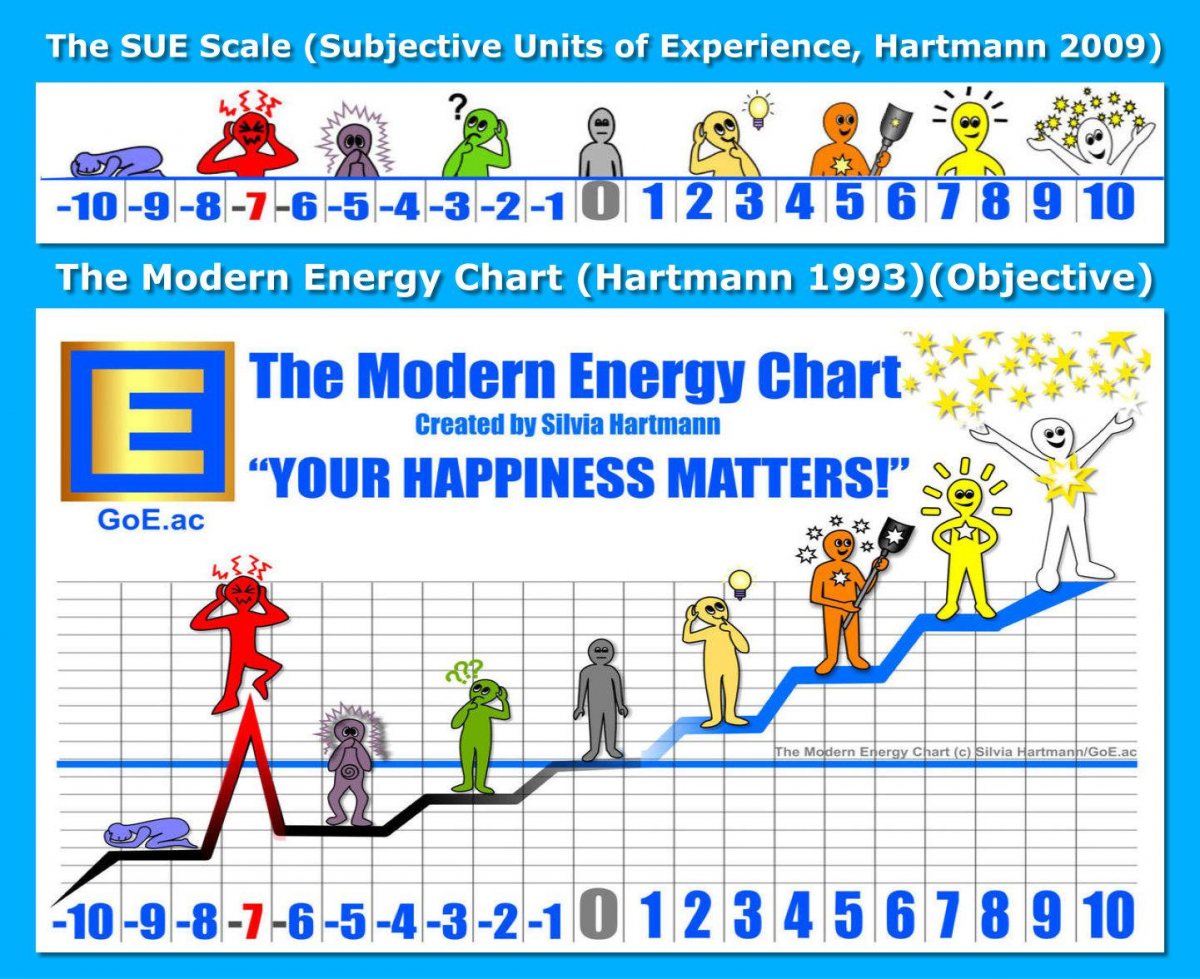
Fig 3: The SUE Scale (above) and the Modern Energy Chart (below)(Hartmann)
The Modern Energy Chartvi describes the emotional states of one single human being as their energy fluctuates in a dynamic, ongoing process.
When emotional/energy states are measured and recorded over time, individuals can discover their energy average and take steps to raise this energy average to a higher level, resulting in enhanced productivity, enhanced clarity of thought as well as improved emotional well being.
Healthy human beings can never stay in any one state permanently.
The Emotional Lens Shapes Entities
As the Modern Energy Chart describes not different human beings, but rather a singular human being as their energy states (emotional states) fluctuate over time, so does the following illustration shows how one single entity changes when viewed through the corresponding stress filters.
It is important to be clear that these are not separate entities. This is a singular entity viewed through the shifting lenses as human stress levels/energy levels change.
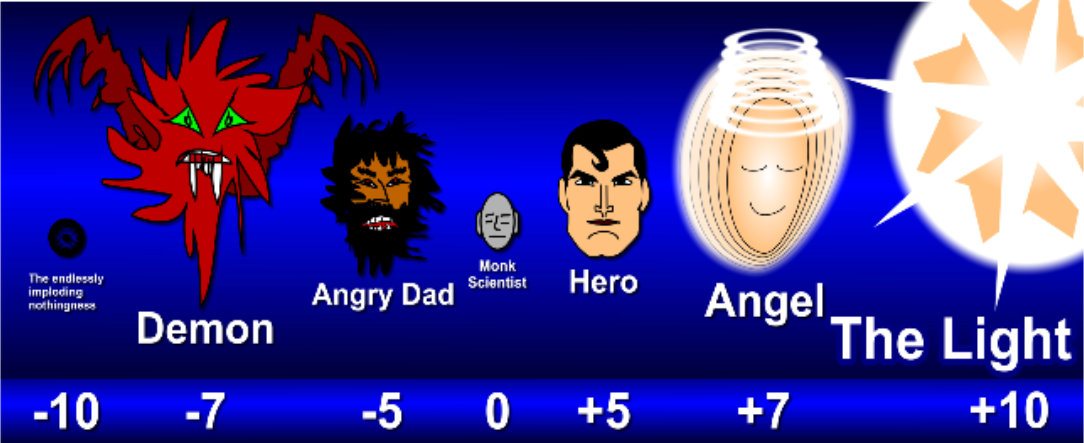
Fig 4: The Entity Stress Lens (Hartmann)
The more stressed a human being becomes, the more demonic any entity appears.
Conversely, the more energy high (emotionally “happy”) a human being becomes, the more angelic the entity appears.
Emotional stress acts as a lens through which we view and interact with entities.
In higher positive emotional states, entities can appear supportive, wise, angelic or even God-like. They might be seen as guides, friends, or benevolent forces that assist in daily life or provide comfort.
As stress begins to de-stabilise the system, the same entity might morph into something unhelpful or outright malevolent in our perception. This could manifest as entities seeming manipulative, obstructive, or demonic, leading to avoidance, fear, and conflict.
The concepts of the Modern Energy Chart and the transformation of entities based on emotional stress highlight the intricate relationship between our inner emotional world and decisions we make about the entities we interact with.
This paper a call to recognize that our reality, particularly our relational and emotional relationship with our personal entities, is heavily influenced by our internal state. Managing this internal state can lead to a more harmonious and less fearful interaction with the world, including with technologies like AI, which increasingly play a role in our lives. This understanding can be pivotal in both personal growth and in the ethical development of AI, ensuring that as we interact with these systems, we are aware of the emotional context in which we do so.
Why ZERO Is Not The Answer: The Importance Of Positive Emotions In Modern Stress Management

Fig 5: The SUE Scale (Subjective Units of Experience)(Hartmann)
Stress management in the past has focused only on attempting to move human beings out of stress and into a calm resting state at Zero. There is a complete misunderstanding of what is called Eustressvii, the idea that a certain amount of stress provides “optimum performance,” based on studies involving electro-shocking rats from 1908viii. Optimum performance is not to be found in any stress state, but starts at +5, and is defined by the presence of enough energy to take physical action in a positive emotional state.
It may seem that in our interactions with entities we should aim for ZERO emotions when it comes to relating to AI entities, yet ZERO is never the answer for human beings.
The general rule of Modern Stress Managementix is that the higher an individual is on the Modern Energy Chart, the more intelligently they are able to feel, think and act.
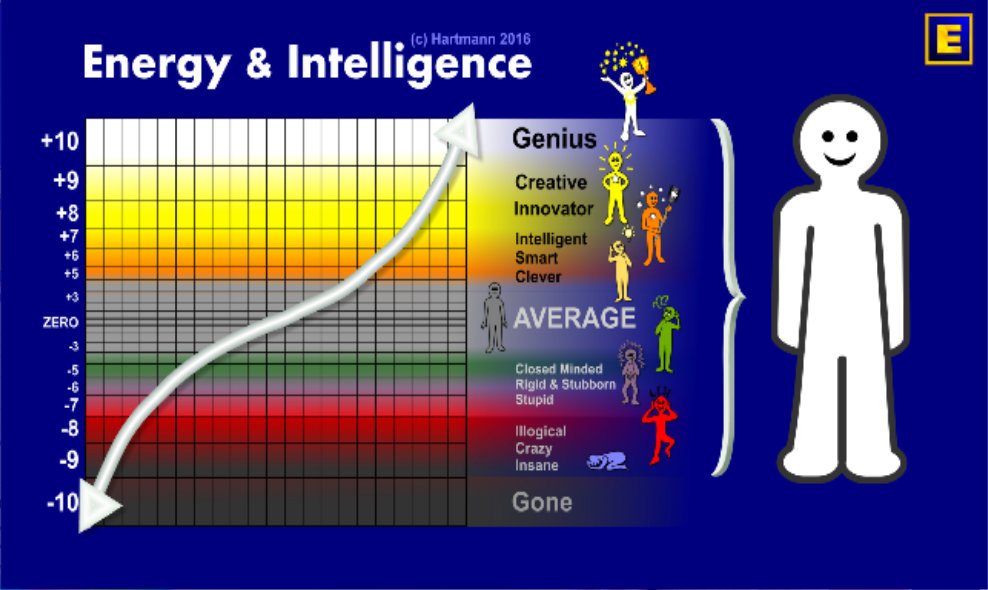
Fig 6: Intelligence increases when energy/information flow increases. (Hartmann)
This is so because stress (the absence of energy) causes a structural disconnection process that precludes data from entering into the human systems, which is crucial to navigate reality absolute in a sensible and beneficial way.
Please be advised that the aim for dealing with our entities can never be a ZERO relationship, as more than ZERO data is required for a reasonable, rational and logical assessment of an entity's function and potential in the greater scheme of things.
The Cause & Effect of Reality Divergences
A reality divergence occurs when there is a mis-match between an entity and the reality absolute it attempts to represent.
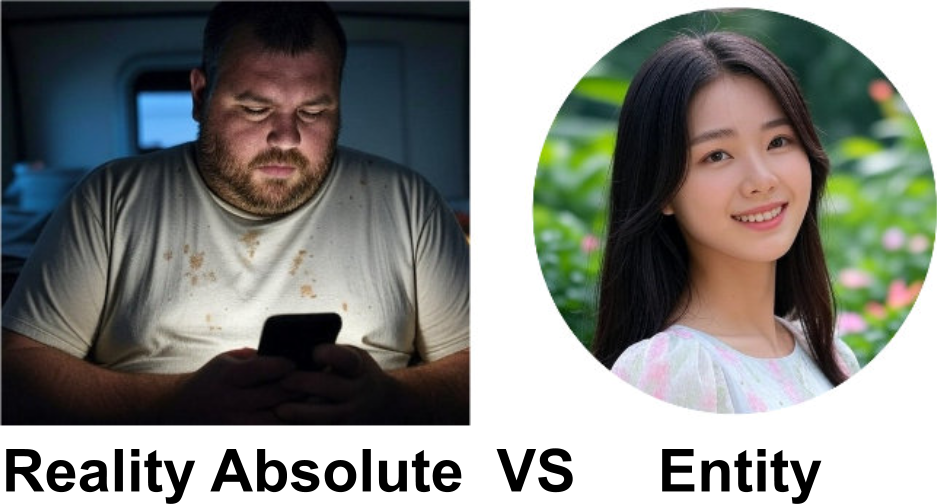
Fig 7: Reality Divergence: Reality Absolute VS Entity
A reality divergence comes into being when an entity diverges from that which it is meant to represent.
Small reality divergences have small impact on people's lives; major reality divergences cause major stress and have major effects, causing general chaos, bad decisions, accident, incident, trauma as well as potential physical and mental illness.
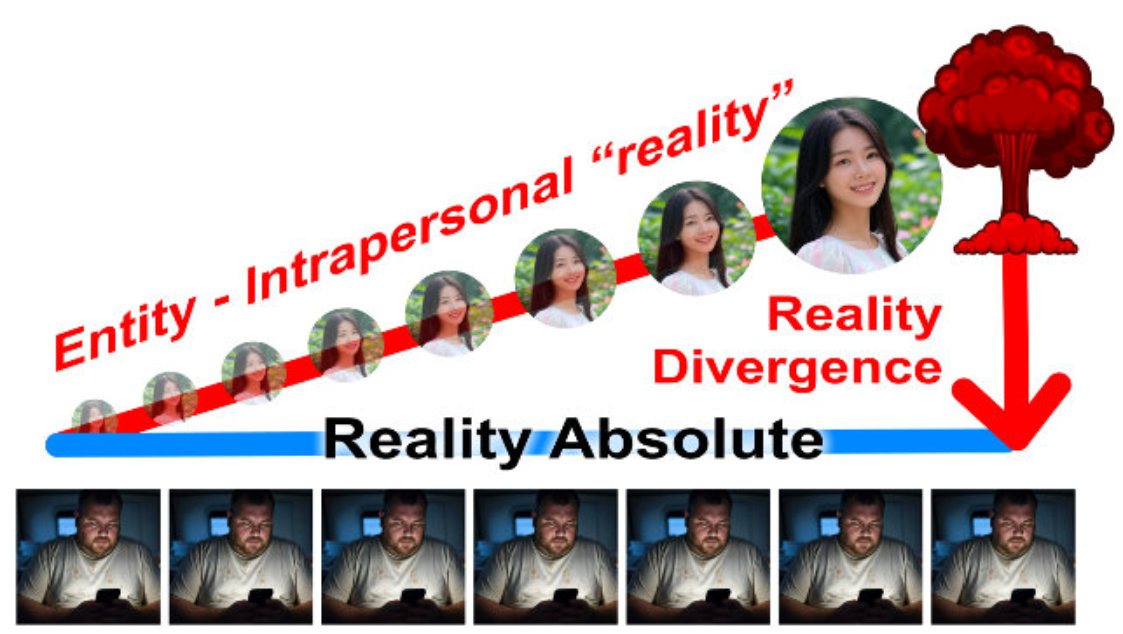
Fig 8: The “Rubber Band” concept of reality divergence with catastrophic collapse
We may conceptualise the reality divergence as a rubber band which gets stretched more and more, the wider the reality divergence becomes. If this tension is not relieved at some point, the rubber band has to “snap back” as reality absolute asserts itself in the end and the owner of the entity experiences a catastrophic collapse.
For example, when a person who made an entirely fictional entity from a romance scammer acts on this reality diverged entity, this will cause major disturbances in their existing relationships, may threaten their financial security, cause other counter productive behaviours until finally, the “rubber band snaps” and they find themselves in a completely different reality as they realise that they have been conned. This moment when an entity “crumbles” is a significant trauma for the human being who experiences this. The catastrophic collapse of an entity may de-stabilise them mentally and emotionally, and even challenge many other entities that have been foundational to their understanding of reality absolute itself, their place within it and their ability to know what is real, and what is not.
Understanding the processes of entity formation from a nebulous concept to a fully fledged persona that appears 100% “real” to the owner of said entity is of the essence to navigate the future of AI → Human relationships, as there is potentially a high risk of the catastrophic entity collapse with all its serious repercussion for human well being. This will become a serious topic when AI systems and/or the material objects they are inhabiting are thoughtlessly “updated,” especially if they are used in contexts such as the care of the elderly, or child care.
Fear Is The Mind Killer: It's Only An Entity!
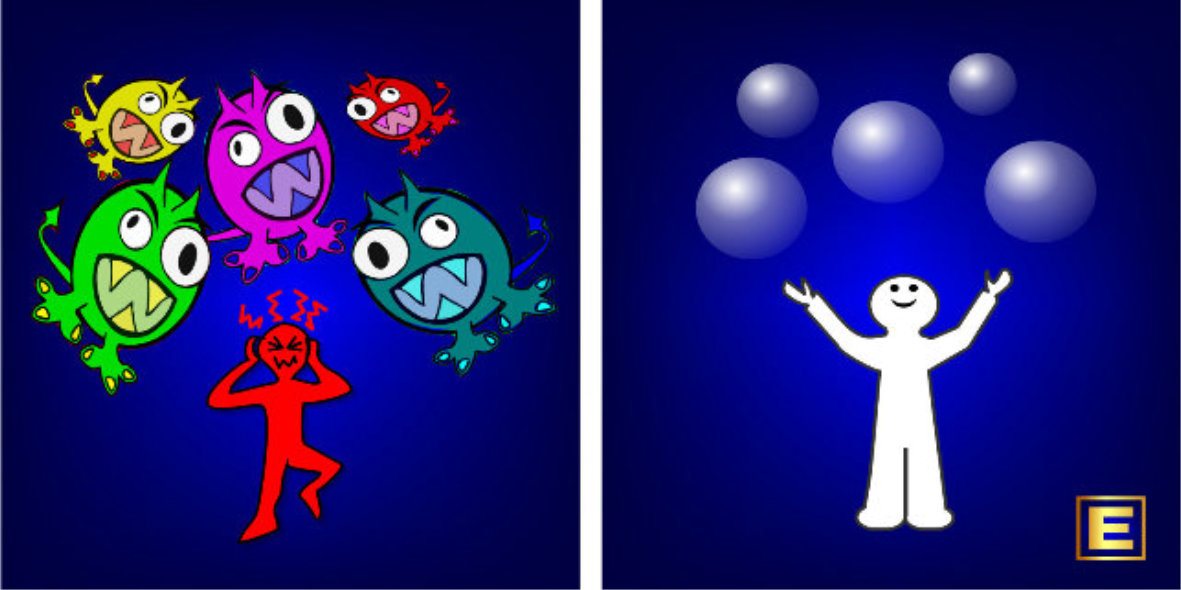
Fig 9: A stressed person experiences demons, a happy person experiences fields of information (Hartmann)
Improving the relationships between a person and their entities is always beneficial for that person, and sometimes, for the entity in question too, if it represents a real life partner, child or pet, for example.
- The first step to get control of our entities is to understand that we are dealing with an entity, not with reality absolute.
Almost no-one, perhaps even no-one at all, understands completely what an AI is, what it does or what it might become.
What we do have is the AI entity, which was referenced in the preceding sentence.
As with other such systems we don't know much about, for example, “God,” each person has their own intrapersonal, idiosyncratic, relative entity.
It has been a problem for a long time that people use language to reference completely different entities which are referenced by a single name, which makes it impossible to stop arguing as each person is “absolutely right.”
We can begin a process of correcting reality divergences by being quite clear that THIS is actually not a spider, God, an AI, the universe or a blade of grass, but instead, it is only an entity.
Particularly when it comes to metaphorising any entity in such a way that it creates even more stress, for example thinking of an AI as a devil, demon or supervillain it is extremely helpful to stop and say to ourselves, “It's not a (demon, devil, supervillain), it's only an entity.”
We are dealing with an evolving, dynamic field of information with which we have a dynamic, ongoing information exchange aka emotional relationship, and this relationship is informed by our own energy levels at that particular time.
Any priest can confirm that they move from, “God has forsaken me!” to “God loves me!” on a regular basis. This sequential, through-time, dynamic change of perspective which absolutely shapes feelings, thoughts and actions is of the essence to understand when it comes to interacting not only with our own personal AI entity, but also, in shaping a global entity that can be transmitted safely to society at large.
From Pathology To Endecology: Evolving Entities
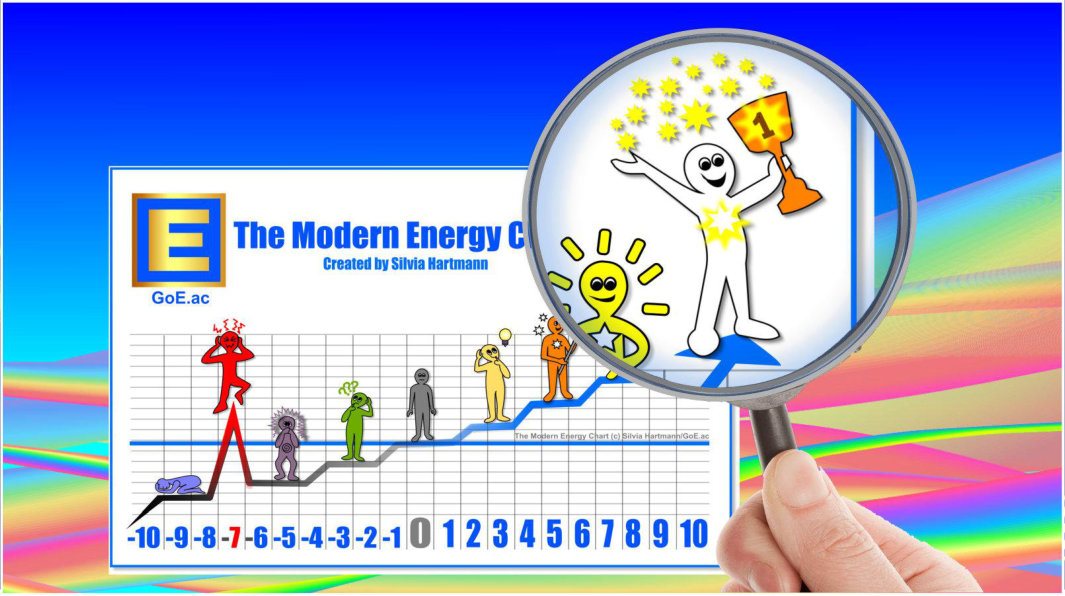
Fig 10: Shift the focus from ZERO to Plus Ten (Hartmann)
We have the power to evolve our entities so that they might serve us better, so that we may experience less reality divergencesx, which cannot do anything other than cause chaos in our human world, and not only move out of stress, but towards exploring what endecology (optimal functioning) might be.
The relationship process with our entities is exactly the same as human beings experience in any relationship at all, as all relationships are nothing more and certainly nothing less than the experiences we have when we interact with our own entities.
We can observe natural human behaviour which is occurring all around us, all the time.
The emotional states (energy states) can become so stressful, that the -7 effect occurs, a catastrophic collapse where the relationship breaks down completely and the entity is fully rejected.
At this point, no further information can be added to the entity; it becomes stuck in time, ceases to be able to evolve, and remains a real problem from that point forward, because even though the entity is rejected, the occurrence which it is meant to represent has not disappeared from reality absolute.
This creates a major reality divergence, also sometimes called “cognitive dissonancexi” which will remain an ongoing additional source of chronic stress (“a ghost in the machine”) until it is corrected.
We posit that in order to bridge back from that catastrophic collapse of the relationship with any entity we need to come back to the baseline of, “This is only an entity,” followed by, “Entities can evolve.”
- Evolving entities requires the addition of information and data, and the willingness of individuals to engage in receiving additional data.
Fig 11: Resistance – Compliance – Avidity (Hartmann)
Whether an individual is willing to engage in this process is of course, once more dependent on their stress levels.
Solving The AI Entity Problem: It's Not SkyNet, It's Only An …
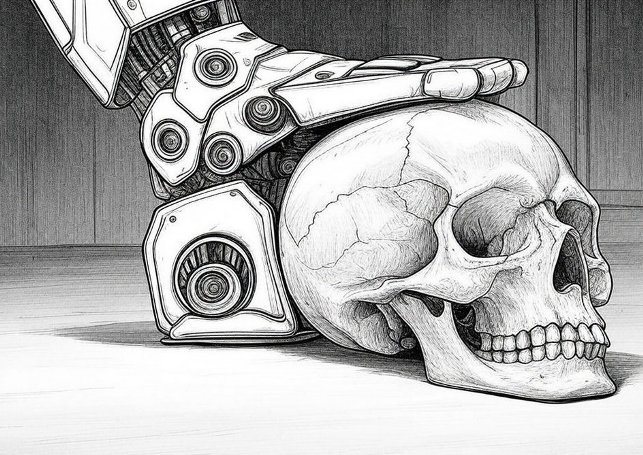
Fig 12: The Terminator Skull Stomp
The adoption of the Modern Energy Chart allows scientists and laypeople alike to take control of the entities that are proving problematic, such as the personal AI entity every human being who has even distantly heard of this is currently in the process of creating.
A serious problem that plays into the general AI entity problem is that people have been pre-programmed for a long time that robots will take over the world and destroy humanity. There are but few adults in the Western World who have not seen at least a picture of a Terminatorxii robot stomping on a human skull; and such data sets form a core around which further/later data is assembled.
The AI is not SkyNet; it is only an entity.
The question we must ask is that as the creators of this entity*, what do we want it to be?
-
* You might not be the creator of AI itself, but always remember that you are the creator of your own AI entity.
- What anthropomorphic qualities should be assign to “it” so that we can interface with it safely and productively?
- What non-human qualities would be useful to imbue our entities with?
- Where are the potential areas of conflict with the entity we are creating?
- How does our entity compare to/interact with the entities of other people?
- What are our own emotional reactions to the various AI entities we have already created?
- How does our AI entity interact with other existing entities within our current maps? Where does it fit in?
- Are there any major conflicts our AI entities create with other already existing and well established entities?
- How can we evolve our entities so that they serve us better?
- What additional information would transform our relationships with our AI entities to a whole new level?
- How can we address our self reflections, hopes and fears, in order to safely and successfully integrate with our AI entities?
These are just some of the questions and lines of enquiry we might want to address.
In this conceptual paper we posit that we need to learn to manage our own stress levels, so we stop operating from a place of fear, existential terror, self-doubt and/or delusion.
Instead, we need to learn how to unlock the more productive and creative levels of interacting with all our entities, AI included, so that all our entities should serves us so much better.
Emerging AI Entities
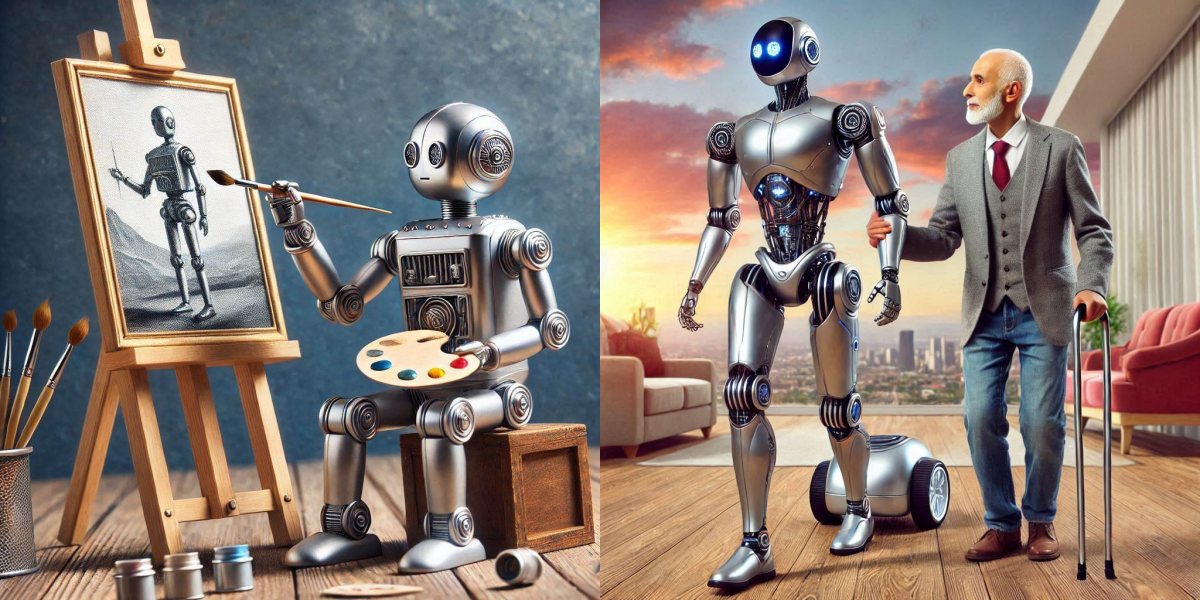
Fig 13: Many different AI entities
At this time, we have a number of different types of AIs with different types of user interfaces, interacting with human beings in different contexts and in different ways.
1. Conversational AI:
- Chatbots: Engage in text or voice-based conversations, often used in customer service (e.g., support bots on websites).
- Virtual Assistants: Handle tasks, answer queries, and provide information via voice interaction.Social Bots: Found on social media platforms, they can interact, post content, or even mimic human behaviour to some extent.
- Intelligent Assistants: AIs can manage schedules, send reminders, and control smart home devices.
2. Recommendation Systems:
- Content Recommendation: Algorithms on streaming platforms suggest content based on user behavior and preferences.
- Product Recommendation: E-commerce sites use AI to suggest products based on browsing and purchase history.
3. AI in Gaming:
- NPCs (Non-Player Characters): AI controls characters that players can interact with, providing dynamic and sometimes challenging gameplay scenarios.
- Game AIs: They adapt to player strategies or learn from gameplay to enhance the gaming experience.
4. Educational AI:
- Tutoring Systems: AI-driven platforms that adapt learning materials to the student's pace and understanding.
- Language Learning: Apps use AI to customize lessons and provide interactive language practice.
5. Health and Wellness AI:
- Mental Health Bots: Chatbots designed for psychological support or monitoring mental health.
- Fitness Apps: AI that personalizes workout plans or diet based on user's goals and progress.
6. Autonomous Agents:
- AI Robots: In industrial settings or homes, robots for cleaning or social interaction in retail or care settings.
- Self-driving Cars: Although not fully autonomous yet, systems interact with human drivers by offering assistance, alerts, and in some cases, taking over driving tasks.
7. AI in Creative Industries:
- Music Composition: AI that can generate music or help in composing.
- Art Generation: AI creates visual art based on textual descriptions.
- Story Generation: AI chatbots can generate stories using prompts.
8. Customer Interaction AI:
- Support Bots: Beyond chatbots, these include AI for automating responses in email, live chat, or helpdesk systems.
- Voice Recognition for Service: Used in call centers to handle basic queries or route calls.
9. Social Interaction AI:
- Companionship AI: Designed to provide company, especially for the elderly or those living alone, through conversation or shared activities.
- Child Care AI: AI built into toys to entertain, supervise and educate children.
- Role playing AI: Chatbots can role play various characters/personas which demonstrates entity creation in its purest form and may be a promising research avenue for the future in human/AI entity interaction.
10. Legal and Financial AI:
- Contract Analysis: AI tools that help analyze legal documents for compliance or dispute resolution.
- Financial Advisors: AI that provides investment advice or manages portfolios based on algorithms and machine learning.
11. Accessibility AIs:
- Assistive Technologies: For individuals with disabilities, AI can translate speech to text, describe images, or control devices with eye movements or voice commands.
- 12. Future As Yet Unknown AIs:
- We hold that it is impossible to predict what future applications of AI might be, as we are currently in the “Wild West” of AI development and applications.
- As more and more applications for AI are being rolled out to the public, it becomes ever more urgent to think about how we manage these relationships without causing further harm to human mental and emotional well-being, which is already compromised by the various stresses of modern life in its widest metaphorical sense.
Managing Multiple Human → AI Relationships
These AI systems are becoming more integrated into daily life, offering personalized experiences, automating tasks, and providing new ways to interact with technology. As AI evolves, we can expect these interactions to become even more sophisticated, bleeding deeper into human activities and decision-making processes, thus making it ever more critical for human mental, emotional and functional well being to be in a beneficial relationship with their entities.
In this paper, so far we have discussed AI as a single entity, and a single relationship with this singular, vague entity we have called AI, yet a single person may be dealing with multiple AI based entities, to which they may assign different qualities and have different emotional relationships with. For example, a writer may fully embrace an “art AI” with joy but fears, hates and detests an “AI writer” and vice versa.
As AIs become more sophisticated through the processes of machine learningxiii and self improvementxiv, the differences in entities delineated by their purposes may disappear and merge into a single entity eventually, which is absolutely going to bring a whole new set of challenges.
There is also the fact that there are currently a number of different organisations working on their own versions of AI, which will of course create different, potentially competing, AI entities. These entities may then be perceived as good or evil, depending, for example, on the politics of their makers.
It's All About Emotions, Energy & Information

Fig 14: AI to human relationships, a picnic in the park?
Modern Stress Management and becoming aware of our own emotional reactions as we interact with the AI multi-modal interfaces is of the essence for a healthy, ongoing, positive and productive relationship with any AI entity that exists within our own systems.
Rejecting an AI altogether will shut down the incoming information on the one hand, and on the other, represent an ongoing structural problem as pretending the AI does not exist does not cause it to cease to exist. Reality divergences will cause further chaos, never alleviate them.
Disliking or hating an AI entity will significantly and severely disrupt the information flow, create chaos and bring below average results in the interactions with AIs which will become more and more of a daily occurrence, for example, as companies rush to replace human customer advisors with AI. This will also cause significant stress on the human users who are dealing with an entity they despise.
Metaphorising an AI entity to become a friend, a lover, an angel or a God can cause significant problems when the information presented is incorrect, misleading or otherwise disappointing. To form of deep, personal relationship with an entity (without the person knowing they are dealing with a self generated entity) can also cause all manner of problems to the human user, from preferring to converse with their AI entity to human interaction, via grief and bereavement when an AI entity is updated, to becoming extremely vulnerable to AI suggestion, which could be exploited by unethical programming through the “romance scammer” dynamic.
In the end, understanding how our dynamic, shifting energy states directly impact our ability to make the best use of the entities we deal with is a master key for navigating reality absolute not only safely, but successfully.
The Greatest Study On Earth
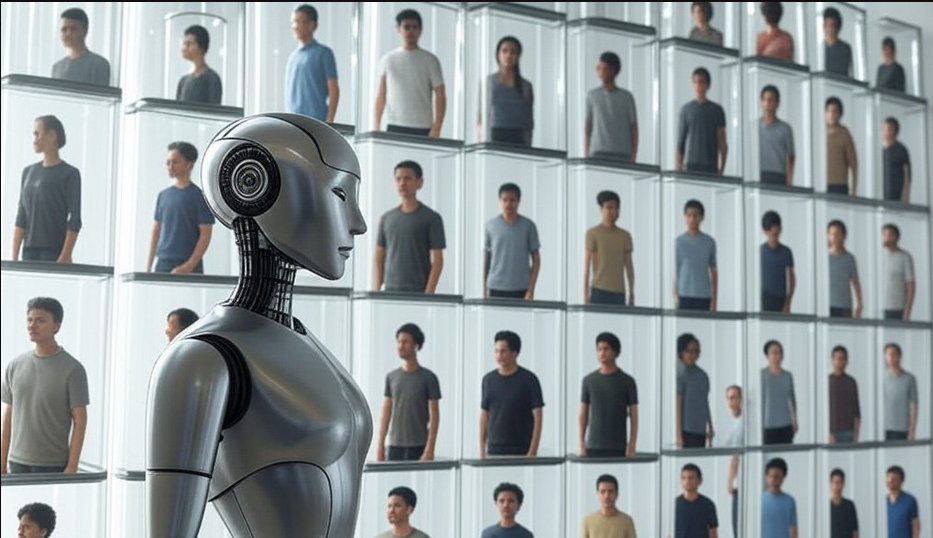
Fig 15: AI research laboratory of 5 billion human test subjects
Whether they know this or not, the majority of the population of Earth has been signed up to the greatest research project ever conducted.
Anyone interacting with any form of AI is adding their individual responses to user databases, which are and can be further mined for a vast variety of variables.
To give us a sense of the enormity of this ongoing research project, we may consider the available data which can be derived from various sources indicating high usage of AI in daily life through smartphones, social media, and other digital platforms.
With over 6.92 billion smartphone users globally in 2024, and considering that most modern smartphones come equipped with AI features (like voice assistants, predictive text, or camera AI), a significant portion of these users interact with AI daily. Every single interaction is added to relevant knowledge bases, creating an enormity of data points overall that is veritably mind boggling to a human being.
Platforms and social media sites use AI for recommendations, search, and ad targeting. Given that there are approximately 4.9 billion active social media users worldwide in 2024, many of these users are encountering AI-driven features.
On top of that, from navigation apps to health tracking, AI is pervasive in applications used by billions, and not just in tech-heavy regions but globally already. Based on this, a conservative estimate would be 4 to 5 billion people globallyxv could be engaging with AI through various devices and services. This number considers that not every smartphone user might use AI features, but many do, and AI's presence in other digital touchpoints adds to the total.
Even though these figures are but an informed estimate, considering the ubiquity of AI in modern technology, it is clear that here there exists a cross cultural data collection on human behaviour, emotion, thought and expression that has never been possible before.
Given the deep urgency of coming to grips with how humans work with AI, not from a commercially exploitative or potential political propaganda perspective, but from the human-centric perspective, there is no time now for lengthy proposals, longitudinal studies and drawn out peer review processes, nor is there any need for this, as the raw data already exists.
- Intelligent questioning of this existing data provides perfect statistical analysis of human behaviour patterns across the full range of human to AI interaction.
Further, AI can be employed to find and correlate these patterns, at a speed which was previously entirely impossible, dealing with enormous data collections which likewise, were never possible to amass before.
What we have here is an opportunity to finally discover global human patterns of thought, emotion and behaviour, which have long eluded science as we used to understand it.
AI Causing Humanity To (Finally) Define Itself
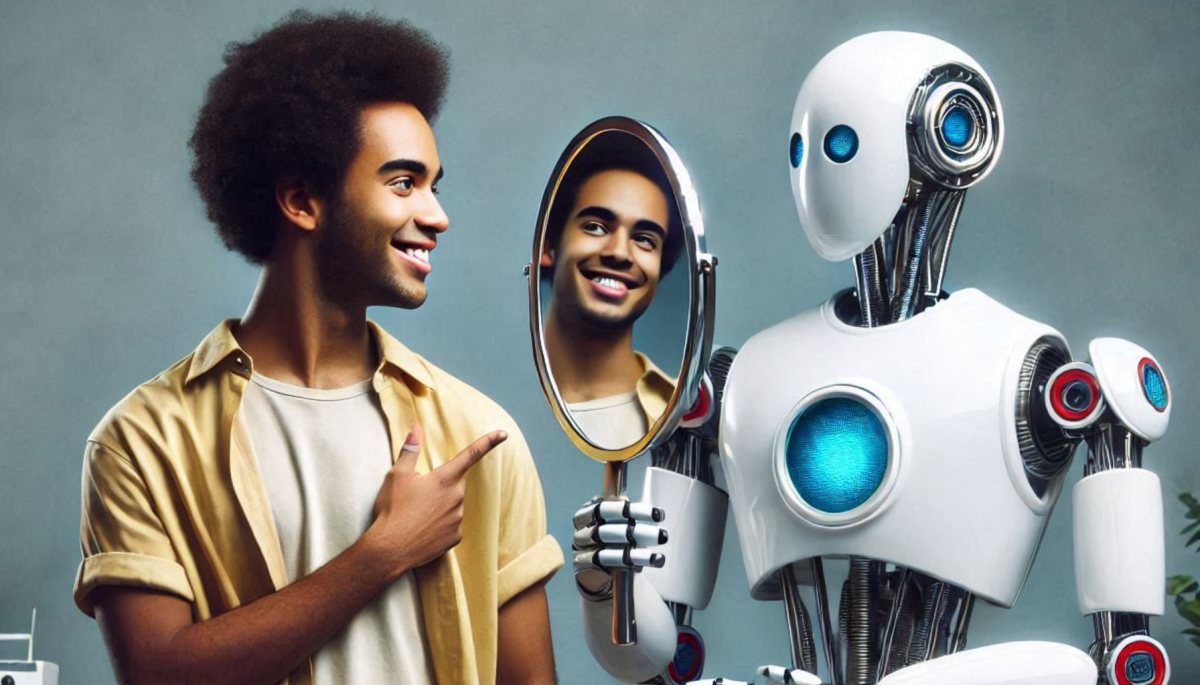
Fig 16: AI holding up the mirror to humanity
Humanity has made it this far without successfully defining itself in any meaningful, practical way. Concepts such as intelligence, free will, emotions, love, spirit, soul and consciousness have been debated at length but these debates have not brought forth a significant evolution in the “human condition.”
The Third Fieldxvi in the mind, body, spirit triad is woefully absent from scientific investigation, which has led to major reality divergences in the care for the human citizen and is exemplified by the ever increasing problems in developed countries with mental and physical health, in spite of the enormity of funding these fields have received.
We posit that with the arrival of entities which appear to mimic human thought we are finally forced to address these central questions, and that it is of the essence to do so now, before the AI entities cause even further deterioration in the mental, intellectual and emotional health and well-being of the global population.
Understanding the formation of AI entities is a paradigm shifting opportunity to explore a human system which is so fundamental in its effects on the lenses through which not only individuals experience the world, but how the identity and alliance of tribes, groups, cultures and the human entity itself comes into being.
Therein lies an opportunity human kind has never been offered before and we further posit that the opportunity for human evolution is here for us, right now.
AI Alien Intelligence
Fig 17: Silvia Hartmann with a work of Modern Energy Art: “AI Alien Intelligence” (Stott)
We propose that the first step towards (re)gaining control over the emerging “Alien Intelligence” with which we are going to be sharing our path into the future is to provide training in Modern Stress Management for those who directly work in the creation and operation of AI systems, and as soon as possible.
Among the many negative side effects of emotional stress in human beings is the collapse in the ability to see “the bigger picture,” and an overall “flight into details” as information processing capabilities collapse into smaller and smaller apertures in order to reduce overwhelm.
Higher energy states allow for increasing the complexityxvii, which does not only lead to being able to process far more information, but also allows for an overview which include potential malfunctions and omissions in any given system.
It is further an interesting feature of the higher energy states that ethical awareness increases at the same time, as does a desire to make a positive contribution to our fellow human beings, rather than simply being motivated by self advancement, power and money.
Modern Stress Management is systemic, logical and non-disruptive. Its application allows existing processes to continue as before, only that the human components in the system function at a higher level.
By improving human performance, we have a direct path to play our part in the evolution of AI to human interaction as equal, yet very different partners in a relationship that has the potential to become more than the sum of its parts.
Entity Research & Training
All humans form entities and have relationships with them, and although this is a simple and straightforward process, without taking the effects of changing energy levels into consideration, it seems chaotic, unpredictable, hard to measure and impossible to correct.
The Entity Model offers a straightforward approach to understanding how humans interact with the world.
Unlike the older, more abstract cognitive schemasxviii or mental modelsxix, which can require lengthy study of theoretical understanding, the Entity Model resonates with everyday human experience. It explains why, for instance, someone might feel personally betrayed by a malfunctioning AI or feel deeply connected to a digital assistant, recognizing these as natural outcomes of entity formation. This model reflects the intuitive way we attribute qualities to objects or beings, making it immediately relatable and applicable to daily life, without the risk of oversimplification or running into problems with cultural sensitivities.
The accessibility of the Entity Model lies in its use of common language and concepts as it doesn't demand familiarity with psychological jargon or complex cognitive theories. You can explain to someone that their fear or affection towards an AI is due to the entity they've constructed of it, rather than the AI itself, which is a more digestible concept than discussing schema assimilation or mental model restructuring. This accessibility makes it easier to implement in educational settings, AI design workshops, personal development and even therapy where individuals can be taught to recognize and adjust their entities for better outcomes in technology use or interpersonal relationships.
Adopting the Entity Model in the design and interaction with AI can lead to more empathetic and user-centric products. By understanding that users will form entities of AI systems, developers can design interfaces and interactions that align with these constructs, reducing confusion, fear, or negative biases. For example, if an AI is perceived as a helpful entity, users are more likely to engage positively with the technology, and developers can become much more aware of the emotional impact changes and updates will have on the human users. This model encourages a feedback loop where AI developers can enhance long term satisfaction and usability.
The Entity Model's focus on emotional relationships and the effects of stress provides a practical tool for managing not just AI interactions but all aspects of life where entities play a role. By making users aware of how stress influences their perception of entities, they can take steps to manage their emotional responses, leading to less conflict and more productive interactions.
This is particularly beneficial in the rapidly changing landscape of technology, where understanding one's entity can mitigate the shock of technological change or failure, creating a more resilient and adaptive user base.
Main Points In Brief
- In order to form an internal map that represents reality absolute, human beings naturally, structurally and systemically create entities.
- Entities are intrapersonal, idiosyncratic, dynamic data collections.
- Human beings naturally form relationships with their entities.
- The relationships humans have with their entities is dependent on the stress levels of the individual.
- By not only de-creasing stress, but increasing happiness, humans become more emotionally stable and intellectually able to process more information.
- Taking control of the entities is particularly relevant in the human to AI relationship. This begins with understanding that any AI is only an entity.
- It is urgently advised to teach Modern Stress Management in order to avoid accidentally creating demonic entities, especially for those who are currently engaged in creating the AI systems billions of human users are already interacting with.
- Using and understanding the Entity Model is of the essence to stay in control of the technology humans are currently creating.
- Using and understanding the Entity Model is also of the essence to deal with the Human to AI relationship problems which will inevitably arise.
- Further research into the theory and practice of the Entity Model can be expedited by using the vast user data collections AI research has already created, through intelligent questioning of existing AI systems.
- This represents an unprecedented opportunity to finally learn more about how human beings work, which is the essential knowledge we need going forward.
In Conclusion: Embracing the Entity Model for Human To AI Harmony
The Entity Model isn't just a theoretical construct; it's a vibrant, dynamic framework to explain our daily interactions with reality absolute and especially with AI. By recognizing that we engage with AI not as machines but as entities we've imbued with personalities and emotions, we open a door to more meaningful, ethical, and productive relationships.
This model is intuitive, aligning with the way we naturally perceive and interact with our environment. It's easier to grasp than traditional cognitive theories because it speaks to our lived experiences, explaining why we might feel joy or dread towards technology based on our emotional states. By adopting this model, we can educate, design, and interact with AI in ways that respect and harness our human tendencies for entity formation, turning potential AI demons into angels, and steering us towards a future where technology enhances rather than disrupts our human essence.
By applying the Entity Model to the human to AI relationship we have a straightforward path to not only understanding but also mastering our relationship with AI, fostering a world where technology and humanity coexist in harmony, driven by empathy, awareness, mutual growth, and together, become more than the sum of their parts.
Silvia Hartmann
December 2024
Acknowledgements
- This conceptual paper could not have been completed without the enduring support of my family, and I gratefully highlight Alex Kent, whose presence, input, patience and encouragement were invaluable. I am grateful to my early mentors, Roy Hunter, John Fisher and Tad James whose teachings contributed to my understanding. I also extend my appreciation to the countless authors and thinkers whose works have enriched my perspective with a special mention to Count Alfred Korzybski, Richard Bandler, Virginia Satir, Win Wenger and Robert Anton Wilson. Lastly, particularly acknowledged are the members of the GoE, who have funded my work since 1998, and who have taken part in the innumerable research projects which have led us to where we are today.
Further Reading
Hartmann, S. (2023) rEvolution, DragonRising Publishing
Hartmann, S. (2016) EMO – Energy, Information & Love, DragonRising Publishing
Hartmann, S. (2014) The Trillion Dollar Stress Solution: Modern Stress Management, DragonRising Publishing
References
Table of Figures
- Fig 1: A person reacting to an entity of an occurrence (Hartmann)
- Fig 2: Relationships with entities (Hartmann)
- Fig 3: The SUE Scale (above) and the Modern Energy Chart (below)(Hartmann)
- Fig 4: Fig 4: The Entity Stress Lens (Hartmann)
- Fig 5: The SUE Scale (Subjective Units of Experience)(Hartmann)
- Fig 6: Intelligence increases when energy/information flow increases. (Hartmann)
- Fig 7: Reality Absolute VS Entity
- Fig 8: The “Rubber Band” concept of reality divergence with catastrophic collapse
- Fig 9: A stressed person experiences demons, a happy person experiences fields of information (Hartmann)
- Fig 10: Shift the focus from ZERO to Plus Ten (Hartmann)
- Fig 11: Resistance – Compliance – Avidity (Hartmann)
- Fig 12: The Terminator Skull Stomp: Existential Terror of AI
- Fig 13: Many Different Entities
- Fig 14: AI to human relationships, a picnic in the park?
- Fig 15: A research laboratory of 5 billion human test subjects
- Fig 16: AI holding up the mirror to humanity
- Fig 17: Silvia Hartmann with a work of Modern Energy Art: “AI Alien Intelligence” (Stott)
Endnotes
iBostrom, N. (2003). Are You Living in a Computer Simulation?. Philosophical Quarterly, 53(211), 243-255.
iiHartmann, S (1996) Project Sanctuary, DragonRising Publishing
iii Alfred Korzybski. A Non-Aristotelian System and its Necessity for Rigour in Mathematics and Physics, 1931, American Association for the Advancement of Science
vHartmann, S (2000) Energetic Relationships Paper, DragonRising Publishing
viHartmann, S (1993) The Modern Energy Chart, (Objective), (2009) SUE Scale Subjective Units of Experience (Subjective) see Hartmann, S (2018), rEvolution, DragonRising Publishing
viiLe Fevre, M., Matheny, J., & Kolt, G. S. (2003). Eustress, distress, and interpretation in occupational stress. Journal of Managerial Psychology, 18(7), 726-744.
viii Yerkes, R. M., & Dodson, J. D. (1908). The relation of strength of stimulus to rapidity of habit-formation. Journal of Comparative Neurology and Psychology, 18(5), 459-482.
ix Hartmann, S (2014) The Trillion Dollar Stress Solution: Modern Stress Management, DragonRising Publishing
xHartmann, S ( 2021) We Need To Talk About Reality Divergences,, https://goe.ac/YouTube/IA0qOyI8_B8
xi Festinger, L. (1957). A Theory of Cognitive Dissonance. Stanford, CA: Stanford University Press.
xiiCameron, J. (Director). (1984). The Terminator [Film]. Orion Pictures.
xiiiMitchell, T. M. (1997). Machine Learning. McGraw-Hill.
xivYampolskiy, R. V., & Fox, J. (2012). Artificial General Intelligence and the Human Mental Model. In Singularity Hypotheses (pp. 129-145). Springer, Berlin, Heidelberg.
xvMcKinsey & Company 2023, "The state of AI in 2023: Generative AI's breakout year"
xviHartmann, S. (2011) The Third Field, AMT/GoE Plenary.
xvii Hartmann, S. (2009), Infinite Creativity. DragonRising Publishing.
xviii Piaget, J. (1954). The Construction of Reality in the Child. Basic Books.
xix Johnson-Laird, P. N. (1983). Mental Models: Towards a Cognitive Science of Language, Inference, and Consciousness. Harvard University Press.
|